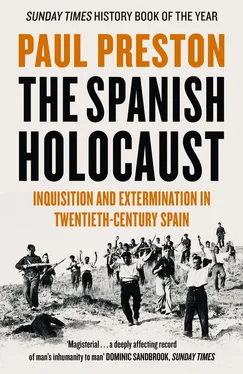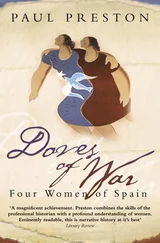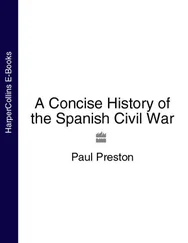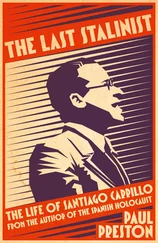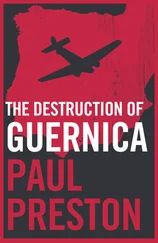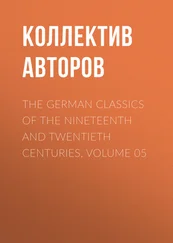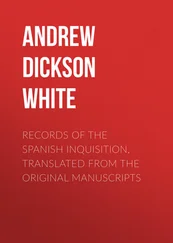In mid-December 1932, in Castellar de Santiago in the province of Ciudad Real, the Civil Guard stood immobile while local landowners and their retainers ran riot. The principal source of local employment was the olive harvest. There were few large estates and the smaller farmers who grew olives had trouble paying their workers a decent wage and preferred to employ workers from outside the province or women, who were traditionally paid less. After protests from the local Socialist workers’ society, the Casa del Pueblo, an agreement had been negotiated with the landowners not to use women and outside workers while local men remained idle. However, encouraged by the Agrupación Nacional de Propietarios de Fincas Rústicas (the Association of Rural Estate-Owners), an aristocratic pressure group, local farmers united to confront what was perceived as the temerity of the workers and ignored the agreement. The Mayor, under pressure from the landowners, did nothing to implement the agreements and simply tried to absent himself from the conflict by going to the town of Valdepeñas.
On 12 December, his car was stopped by a group of unemployed day-labourers who tried to make him return and do his job. Someone in his car fired a shot, hitting Aurelio Franco, the clerk of the Casa del Pueblo, and a fight started. Stones were thrown and the Mayor was hurt. The landowners and their armed guards then rampaged through workers’ houses, smashing furniture and threatening their wives and children. Aurelio Franco and two other union officials were pulled out of their houses and shot in front of their families. The Civil Guard witnessed the incidents but did not intervene. The FNTT newspaper, El Obrero de la Tierra, commented that what had happened in Castellar de Santiago ‘represents in its extreme form the barbarity of a moneyed class that believes that it owns people’s lives and livelihoods. Utterly out of control, the local bosses revealed the real nature of the class that they represent because they turned that place into a corner of Africa.’ A general strike was called in the province. Nevertheless, the local landowners continued to ignore working agreements and no one from the Castellar post of the Civil Guard was punished for dereliction of duty. 76
Demonstrating the Civil Guard’s support for employers determined to block Republican social legislation, the events at Castellar de Santiago were surpassed less than one month later. Now dominated by the extremist FAI, the anarchist movement launched an ill-prepared insurrection on 8 January 1933. It was suppressed easily in most of Spain, but in the small village of Casas Viejas (Cádiz) a savage repression ensued. With the best land around the village used for breeding fighting bulls, the inhabitants faced year-round unemployment, near-starvation and endemic tuberculosis. The writer Ramón Sender wrote of the poor being maddened with hunger like stray dogs. When the FAI declaration of libertarian communism reached the local workers’ centre, the villagers hesitantly obeyed. Assuming that all of Cádiz had followed the revolutionary call, they did not expect bloodshed and naively invited the local landowners and the Civil Guard to join the new collective enterprise. To their bewilderment, the Civil Guard replied to the offer with gunfire. Many fled the village, but some took refuge in the hut of the septuagenarian Curro Cruz, known as Seisdedos. Inside with Seisdedos were his two sons, his cousin, his daughter and son-in-law, his daughter-in-law and his two grandchildren. They and a few other villagers were armed only with shotguns loaded with pellets. A company of Assault Guards arrived under the command of Captain Manuel Rojas Feijespan. During a night-long siege, several were killed as machine-gun bullets penetrated the mud walls of the hovel. Rojas ordered the Guards to set fire to the hut. Those who tried to escape were shot down. Another twelve villagers were executed in cold blood. 77
The immediate reaction of the rightist press was favourable, echoing its customary applause for the Civil Guard’s repression of the rural proletariat. 78However, when they realized that political capital could be made, rightist groups cried crocodile tears and echoed anarchist indignation. Before the full details of the massacre were known, all three Socialist ministers, especially the moderate Indalecio Prieto, had given Azaña their support for the anarchist rising to be suppressed. 79However, despite their hostility to the anarchists, the Socialists could not approve of the gratuitous brutality displayed by the forces of order. To make matters worse, the officers responsible claimed falsely that they had been acting under orders. They were backed up to devastating effect by the future leader of the Unión Militar Española. Captain Barba Hernández was on duty the night of 8 January 1933. When the scandal broke out, he defended his friend Captain Rojas Feijespan by claiming that Azaña had personally given the order ‘shoot them in the belly’. Seized upon by the right-wing press, the fabrication did immense damage to the Republican–Socialist coalition. 80Casas Viejas and its repercussions brought home to the Socialist leadership the cost of participation in the government. They saw that the defence of the bourgeois Republic against the anarchists was sacrificing their credibility with the Socialist masses.
There was further violence during the campaign for the re-run municipal elections on 23 April 1933. There were to be elections in twenty-one towns in the province of Badajoz, the most important being Hornachos. On that day, the Mayor of Zafra, José González Barrero, headed a demonstration in Hornachos of three hundred Socialists and Communists. Red flags were flown and revolutionary chants heard. Initially, on the orders of the Civil Governor, the Civil Guard stood back. However, local rightists, who were running in the elections as the Anti-Marxist Coalition, approached Rafael Salazar Alonso, one of the Radical deputies for the province, who was in Hornachos on that day. Since there was no telephone line to Hornachos, Salazar Alonso drove to the nearby town of Villafranca de los Barros where he telephoned the Minister of the Interior and called for the Civil Guard to be given the freedom to open fire. In his own account, he was still in Villafranca de los Barros when that happened. Other sources suggest that, in fact, he was present when, after stones were thrown and a shot fired, the Civil Guard in Hornachos began to shoot at the crowd. Four men and one woman were killed and fourteen people wounded. Forty workers were arrested, several of whom were badly beaten. 81It was widely believed that Salazar Alonso was responsible for the action of the Civil Guard in Hornachos on that day. 82
The pugnacious and provocative Salazar Alonso was a man given to extreme enthusiasms who, prior to 1931, had been a fiery, anti-clerical Republican but had undergone a dramatic change after falling under the spell of the landed aristocracy of Badajoz. In consequence, he threw himself into the service of reactionary interests with the zeal of a convert and played an important role in the genesis of violence in southern Spain. According to Pedro Vallina, a celebrated doctor of anarchist beliefs, Salazar Alonso was ferociously ambitious and had adopted anti-clericalism as a way of rising to prominence within the Radical Party. He had been born and brought up in Madrid. In his father’s home town, Siruela in Badajoz, he had married the daughter of a wealthy landowner. He had made his early career manifesting radical views, but once he secured a seat in parliament he moved rapidly to the right. During his lightning visit to Villafranca de los Barros on 23 April 1933, he met Amparo, the wife of another even wealthier landowner, a man much older than herself. He abandoned his own wife and children and began an affair with Amparo, who began to visit him in Madrid. The austere and idealistic Dr Vallina was confirmed in his view that Salazar Alonso was ‘one of the most shameless and cynical men I have ever known’. Even the head of the Radical Party, the corrupt Alejandro Lerroux, commented wistfully that Salazar Alonso ‘frequented palaces where I had never been other than on official business’. 83Eventually, both because of and despite the adulterous nature of his relationship with Amparo, he would abandon Freemasonry and become a pious Catholic. 84
Читать дальше
